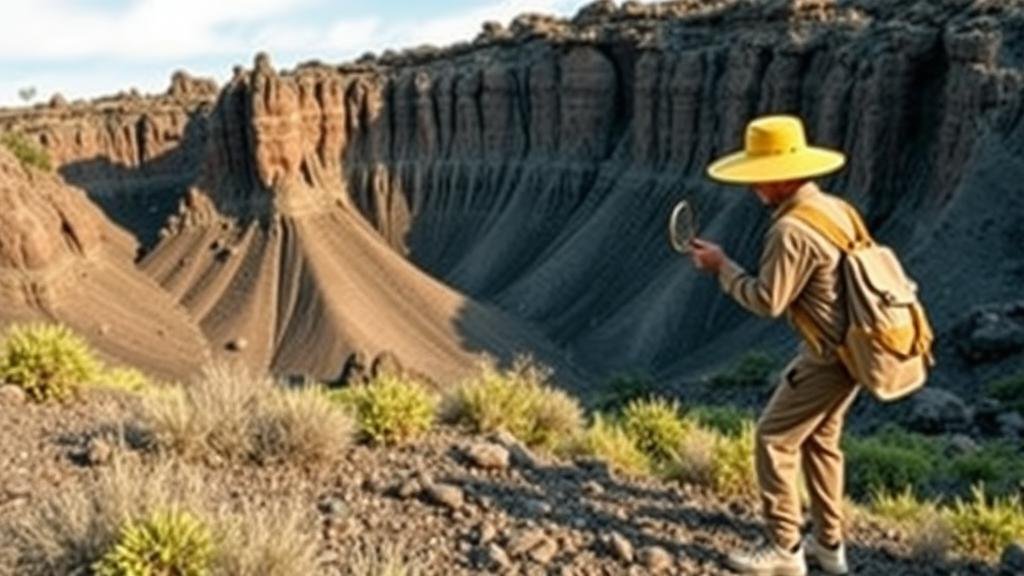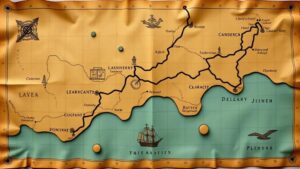Detecting for Gold Nuggets Near Ancient Volcanic Rock Formations
Detecting for Gold Nuggets Near Ancient Volcanic Rock Formations
Gold prospecting remains a captivating pursuit, blending science with the thrill of discovery. Among its myriad strategies, detecting for gold nuggets near ancient volcanic rock formations presents a unique and often rewarding opportunity. This article explores the geological contexts, methodologies, and practical insights necessary for effective gold nugget detection in such areas.
The Geological Context
Understanding the geological features associated with volcanic rock formations is essential for any serious gold detectorist. Ancient volcanic activity can create specific conditions conducive to gold mineralization. The processes involved include:
- Hydrothermal fluids that circulate through fault lines and porous rock, depositing gold as they cool.
- Erosion of volcanic rock, which can release gold particles, leading to accumulations in surrounding sediments.
- Formation of placer deposits due to weathering and river action, particularly near ancient volcanic remnants.
For example, regions such as the Sierra Nevada in California feature numerous volcanic deposits where significant gold has historically been found. The interaction between volcanic activity and mineral-rich hydrothermal systems can lead to the creation of rich gold deposits in ancient riverbeds and alluvial plains.
Choosing the Right Equipment
The success of detecting for gold nuggets significantly hinges on the equipment used. Here are some key tools and technologies:
- Metal Detectors: High-frequency detectors, such as those operating at 19 kHz or higher, are particularly effective for gold nugget detection since they can pick up smaller gold particles.
- Prospector’s Picks and Shovels: Essential for digging and sifting through soil and rocky substrates.
- Gold Pans and Classifiers: Useful for sifting through material collected from potential deposits.
For example, detectors like the Minelab GPZ 7000 have revolutionized gold detection, providing exceptional depth and sensitivity to small nuggets, making them ideal for volcanic regions.
Identifying Potential Sites
Not all ancient volcanic rock formations are gold-bearing. So, it is crucial to identify locations with geological factors that enhance gold presence:
- Proximity to water sources: Rivers and streams that have eroded volcanic deposits can carry gold downstream, leading to strategic detecting spots.
- Presence of quartz veins: These veins often accompany volcanic activity and can be associated with gold deposits.
- Marked fault lines: Areas where geological pressure has caused fractures can serve as pathways for mineral-rich water, enhancing gold mineralization.
A notable case is the Mother Lode gold belt in California, which runs along the Sierra Nevada and includes numerous ancient volcanic formations. Prospectors frequently find gold nuggets in proximity to quartz veins and historic river channels.
Techniques for Successful Detection
Proper technique is crucial for maximizing the chances of finding gold. Here are several tried-and-true approaches:
- Grid Pattern Searching: Covering areas systematically ensures comprehensive detection, minimizing the chances of missing out on hidden nuggets.
- Using Ground Analysis Techniques: Understanding the soil composition and mineralization levels can help in determining areas with a higher probability of containing gold.
- Prospecting at Optimal Times: Early mornings or after rainfall can enhance visibility and make detecting easier.
For example, successful prospectors often recommend detecting after heavy rains, as they may expose new gold deposits or wash nuggets from upstream locations.
Legal and Environmental Considerations
Before embarking on a gold detection adventure near ancient volcanic formations, it is vital to consider legal regulations and environmental responsibility. Key points include:
- Permits and Regulations: Many regions require permits for prospecting. It’s crucial to research local laws to avoid legal issues.
- Respect for the Environment: Avoid damaging ecosystems and adhere to the “leave no trace†principle to preserve the natural habitat.
For example, the Bureau of Land Management (BLM) in the United States administers guidelines for prospecting on public lands, ensuring that prospectors operate within legal parameters and with environmental stewardship in mind.
Conclusion and Actionable Takeaways
Effectively detecting for gold nuggets near ancient volcanic rock formations requires a mix of geological understanding, appropriate equipment, strategic location selection, and adherence to legal frameworks. By leveraging advanced metal detectors and recognizing optimal geological features, prospectors can enhance their chances of uncovering valuable nuggets. Always engage in responsible prospecting to ensure that future generations can enjoy these ancient landscapes.
In summary, the pursuit of gold near ancient volcanic formations is not just about the hunt; it is a journey through geological time, rich with potential rewards.



